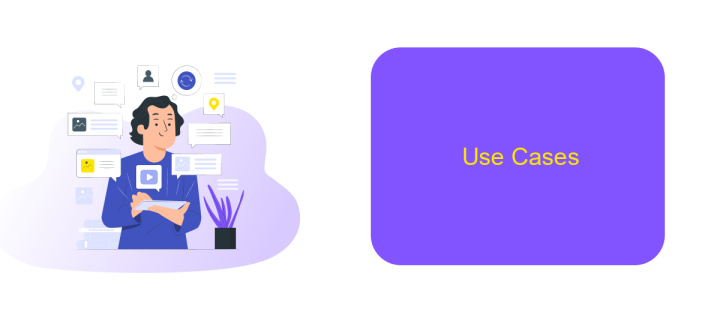Apigee Vs Istio
In the evolving landscape of microservices and cloud-native applications, Apigee and Istio have emerged as pivotal tools for managing APIs and service meshes respectively. This article delves into a comparative analysis of Apigee and Istio, examining their core functionalities, strengths, and use cases. Understanding the distinctions between these two platforms can help organizations make informed decisions tailored to their specific needs.
Introduction
In the rapidly evolving landscape of cloud-native applications and microservices, choosing the right tools for managing, securing, and monitoring APIs is crucial. Apigee and Istio are two prominent solutions that cater to these needs, each offering unique features and capabilities. Understanding the differences and strengths of each can help organizations make informed decisions that align with their specific requirements.
- Apigee: A robust API management platform from Google that provides comprehensive tools for API analytics, security, and monetization.
- Istio: An open-source service mesh that offers advanced traffic management, policy enforcement, and telemetry for microservices.
While Apigee excels in API management and monetization, Istio shines in service mesh capabilities, making it ideal for complex microservice architectures. For organizations seeking to streamline their integration processes, tools like ApiX-Drive can complement these platforms by automating data transfers and synchronizations between various applications, enhancing overall efficiency and productivity.
Architecture

Apigee and Istio serve different purposes within the microservices ecosystem, yet both play crucial roles in managing and optimizing API interactions. Apigee primarily focuses on API management, providing tools for designing, securing, deploying, and analyzing APIs. It acts as a gateway, handling traffic routing, rate limiting, and providing a robust analytics dashboard for monitoring API performance. Apigee's architecture is designed to streamline API integration, making it easier for developers to connect various services and applications.
Istio, on the other hand, is a service mesh that addresses the complexities of managing microservices communication. It provides features such as traffic management, security, and observability, which are essential for maintaining a resilient microservices architecture. Istio's sidecar proxy model allows it to intercept and manage communication between services without requiring changes to the application code. For teams looking to further simplify their integration processes, services like ApiX-Drive can be beneficial. ApiX-Drive offers automated integration solutions, enabling seamless data flow between different applications and services, thus complementing the functionalities provided by both Apigee and Istio.
Comparison

When comparing Apigee and Istio, it's important to understand their core functionalities and use cases. Apigee is a robust API management platform designed to help businesses build, deploy, and manage APIs. Istio, on the other hand, is a service mesh that provides a way to control how microservices share data with one another.
- Functionality: Apigee focuses on API lifecycle management, including analytics, security, and monetization. Istio primarily addresses service-to-service communication, offering traffic management, security, and observability.
- Use Cases: Apigee is ideal for organizations looking to expose APIs to external developers and partners. Istio is better suited for managing internal microservices within a distributed system.
- Integration: Apigee integrates well with various third-party services, including ApiX-Drive, which simplifies the process of connecting different applications and automating workflows. Istio requires more in-depth configuration and is often used in conjunction with Kubernetes.
In summary, while Apigee excels in API management and external integrations, Istio provides a comprehensive solution for managing microservice architectures. The choice between the two depends on your specific needs, whether it's API lifecycle management or microservice communication.
Use Cases

Apigee and Istio serve distinct yet complementary roles in the management of APIs and microservices. Apigee is primarily focused on API management, providing features like API analytics, developer portals, and security policies. This makes it ideal for organizations looking to expose their services to external developers while maintaining control and visibility.
Istio, on the other hand, is a service mesh that provides advanced traffic management, security, and observability for microservices. It is particularly useful for internal service-to-service communication within a microservices architecture, offering features like load balancing, service discovery, and fault injection.
- Apigee: External API management, developer portals, security policies.
- Istio: Internal service mesh, traffic management, observability, security.
- ApiX-Drive: Integration automation, connecting Apigee with other services.
By leveraging both Apigee and Istio, organizations can achieve a robust API and microservices strategy. Additionally, tools like ApiX-Drive can automate the integration between these services, ensuring seamless data flow and operational efficiency. This comprehensive approach allows businesses to focus on innovation while maintaining a secure and scalable infrastructure.
Conclusion
In conclusion, both Apigee and Istio offer robust solutions for managing APIs and microservices, each with its unique strengths. Apigee excels in API management, providing comprehensive tools for analytics, security, and monetization, making it an ideal choice for businesses focused on API-centric strategies. Istio, on the other hand, shines in the realm of service mesh, offering advanced traffic management, security, and observability for microservices, which is crucial for complex, distributed architectures.
Choosing between Apigee and Istio depends on your specific needs and existing infrastructure. For organizations primarily concerned with API lifecycle management and monetization, Apigee is the go-to solution. Conversely, for those needing intricate service-to-service communication and enhanced observability within a microservices environment, Istio is more suitable. Integrating these tools with platforms like ApiX-Drive can further streamline operations, enabling seamless data flow and automation between various services and applications, thus enhancing overall efficiency and productivity.
FAQ
What is the primary difference between Apigee and Istio?
Can Apigee and Istio be used together?
Which platform is better for handling API rate limiting and quotas?
Is Istio suitable for managing API security?
How can I automate and integrate my APIs with other services?
Apix-Drive will help optimize business processes, save you from a lot of routine tasks and unnecessary costs for automation, attracting additional specialists. Try setting up a free test connection with ApiX-Drive and see for yourself. Now you have to think about where to invest the freed time and money!

